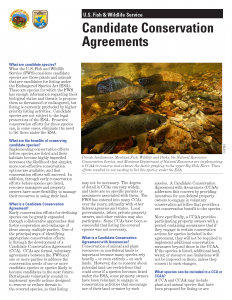Balancing the Management of Powerline Right-of-Way Corridors for Humans and Nature
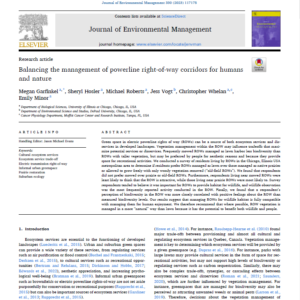
This study surveyed residents living by utility ROWs in the Chicago, Illinois USA metropolitan area to determine if residents prefer utility ROWs managed as lawn over those managed as native prairies or allowed to grow freely with only woody vegetation removed (“old-field ROWs”) and found that respondents did not prefer mowed over prairie or old-field ROWs.
Powerline Corridors Can Add Ecological Value to Suburban Landscapes When Not Maintained as Lawn
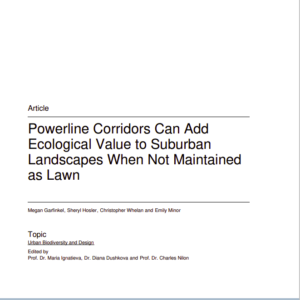
This study shows that both old-field- and prairie-managed powerline corridors add habitat value to Midwestern U.S. suburban landscapes by providing alternative habitat types that support many species.
Rapid Assessment of Roadsides as Potential Habitat for Monarchs and Other Pollinators
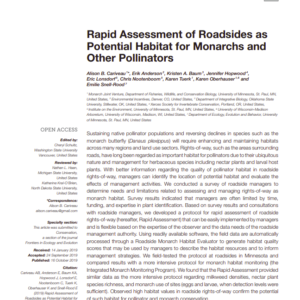
This paper documents the development and testing of a protocol for rapid assessment of roadside rights-of-way that aids roadside managers with identifying potential locations for monarch habitat along roadsides and with evaluating the effects of management activities. The researchers found that their protocol provided similar data as the more intensive protocol regarding milkweed densities, nectar plant
species richness, and monarch use of sites, and that high habitat values roadside rights-of-way confirm the potential
of such habitat for pollinator and monarch conservation.
Roadside Rights-of-Way as Pollinator Habitat: A Literature Review
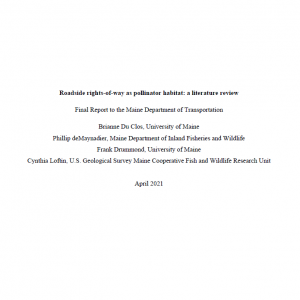
This paper prepared by the University of Maine is a review of peer-reviewed academic and non-peer reviewed gray literature describing ROW management practices and their effects on pollinator populations, focusing on applications of these practices in landscapes similar to those found in Maine and the northeast United States; that is, landscapes that are heavily forested and interspersed with agriculture, developed areas, and wetlands.
Understanding Barriers and Incentives to Voluntary Conservation Opportunities under the ESA
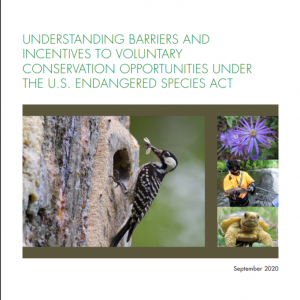
This report by the Electric Power Research Institute and Environmental Policy Innovation Center helps electric power and other companies to better understand the factors that motivate companies to pursue voluntary species conservation and how to lower the barriers to voluntary conservation under the U.S Endangered Species Act (ESA).
Pollinator Conservation and Management on Electrical Transmission and Roadside Rights-of-Way: A Review
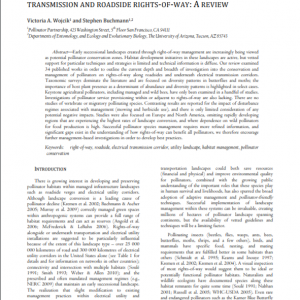
This review outlines the current depth and breadth of investigation into the conservation and management of pollinators on rights-of-way along roadsides and underneath electrical transmission corridors.
Monarch Habitat in Conservation Grasslands
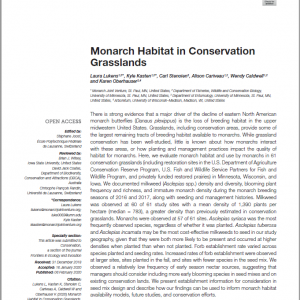
This resource evaluates monarch habitat and use by monarchs in 61 conservation grasslands (including restoration sites in the U.S. Department of Agriculture Conservation Reserve Program, U.S. Fish and Wildlife Service Partners for Fish and Wildlife Program, and privately funded restored prairies) in Minnesota, Wisconsin, and Iowa. It presents establishment information for consideration in seed mix design and describe how our findings can be used to inform monarch habitat availability models, future studies, and conservation efforts.
Milkweed Plant Detection Using Mobile Cameras
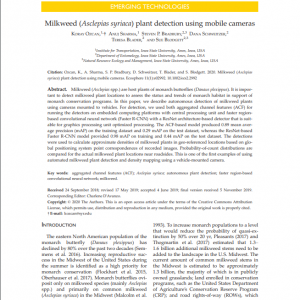
This paper describes autonomous detection of milkweed plants using cameras mounted to vehicles. The detections were used to calculate approximate densities of milkweed plants in geo-referenced locations based on global positioning system point correspondences of recorded images. Probability-of-count distributions are compared for the actual milkweed plant locations near roadsides. This is one of the first examples of using automated milkweed plant detection and density mapping using a vehicle-mounted camera.
Examining the Potential for Agricultural Benefits from Pollinator Habitat at Solar Facilities in the United States
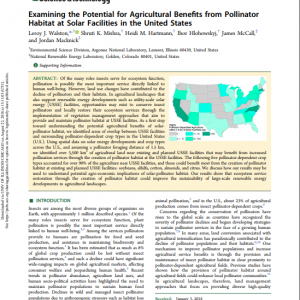
This Environment Science & Technology paper focuses on the benefits that can be realized from pollinator habitat at solar facilities across United States.
MAFWA Mid-America Monarch Conservation Strategy
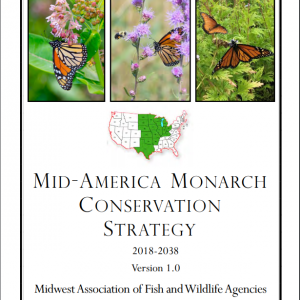
This document prepared by The Midwest Association of Fish and Wildlife Agencies focuses on reversing the decline and to achieve habitat restoration and enhancement of overwintering eastern monarch population in Mexico.
MJV Summary of Department of Transportation Monarch Conservation Efforts
Monarch Joint Venture’s website provides a summary of efforts by state departments of transportation to support pollinators.
Ecological and Wildlife Risk Assessment of Chemical Use in Vegetation Management on Electric Utility Rights-of-Way
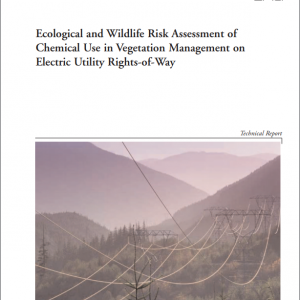
This report prepared by the Electric Power Research Institute (EPRI) evaluates the cost-effectiveness of vegetation management practices, particularly the impact of chemicals on wildlife, along with means of minimizing ecological effects.
Roadsides as Habitat for Pollinators: Are Milkweeds Really Weeds?
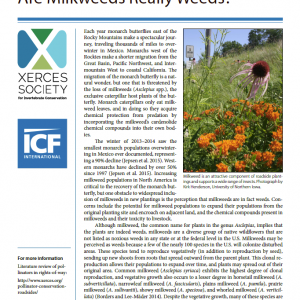
This document developed by the Xerces Society for Invertebrate Conservation and ICF International addresses common concerns about milkweed, the exclusive host plants of monarch butterfly caterpillars.
Roadsides as Habitat for Pollinators: Frequently Asked Questions
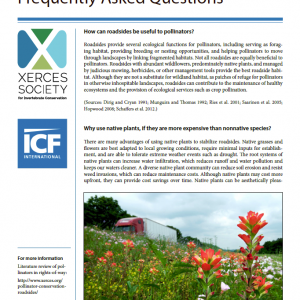
This document developed by the Xerces Society for Invertebrate Conservation and ICF International address many common questions about use of native plants and habitat restoration along roadside rights-of-way.
Texas Monarch and Native Pollinator Conservation Plan
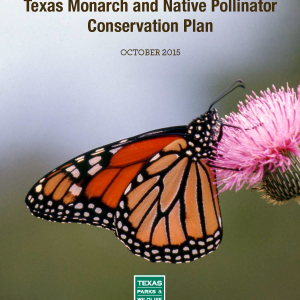
This plan outlines actions in Texas that will contribute to monarch and overall native pollinator conservation through four broad categories: habitat conservation, education and outreach, research and monitoring, and partnerships. The plan was developed by the Texas Parks and Wildlife Department.
National Strategy to Promote the Health of Honey Bees and Other Pollinators
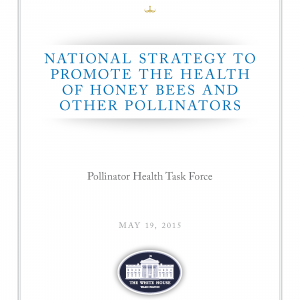
This document published by The White House’s Pollinator Health Task Force follows the June 2014 Presidential Memorandum “Creating a Federal Strategy to Promote the Health of Honey Bees and Other Pollinators.” The strategy outlines a comprehensive approach to tackling and reducing the impact of multiple stressors on pollinator health, including current and planned Federal actions.
ROWSC Electric Perspectives

This article published in Edison Electric Institute’s Electric Perspectivesprovides an overview of integrated vegetation management (IVM) in the energy sector, the environmental benefits, and the Right-of-Way Stewardship Council’s accreditation program for gas and electric utilities.
